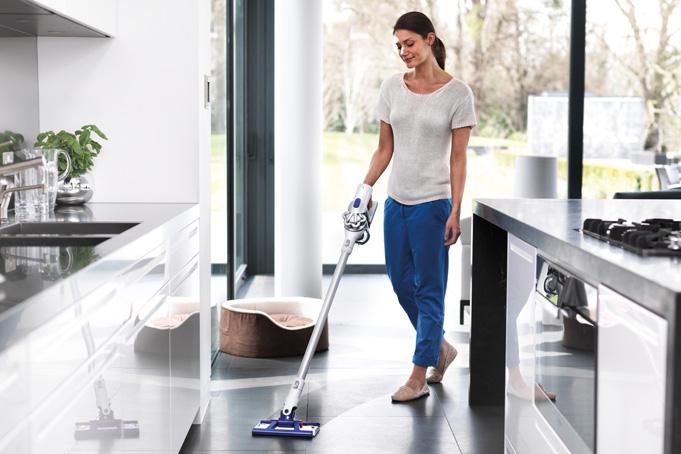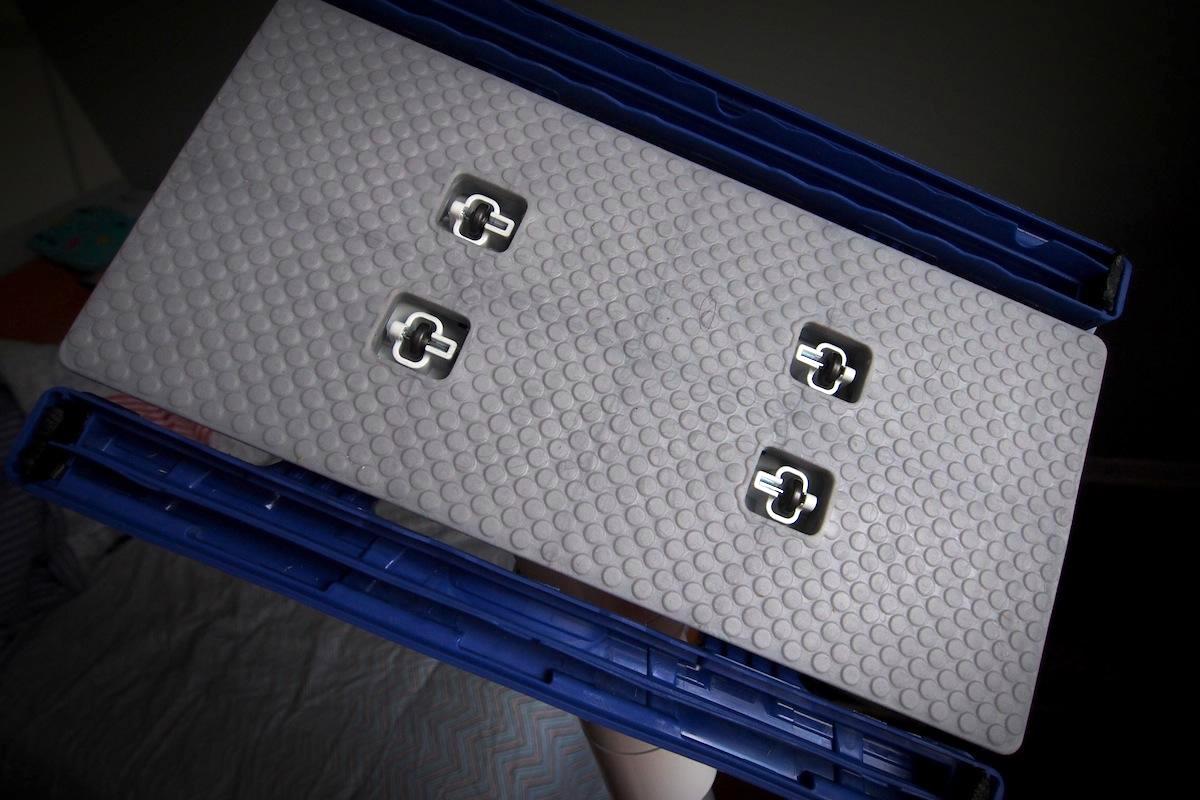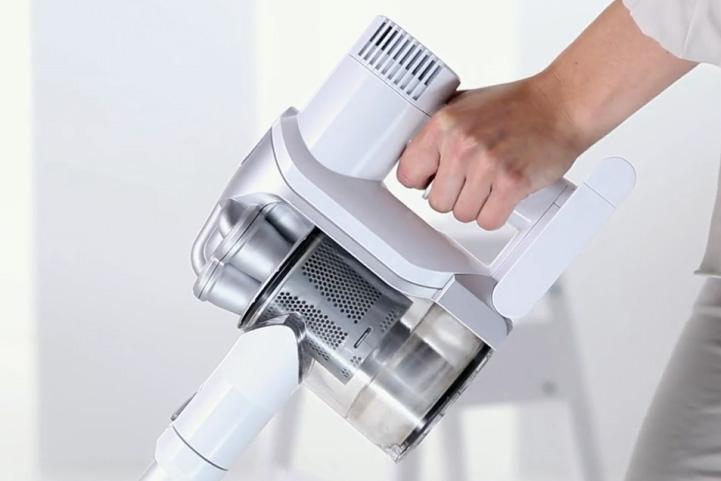
Dyson sucks and blows, and we mean that in the nicest way possible. Now, it’s getting ready to wipe with the latest addition to its home cleaning product line: The DC56 Dyson Hard ($330). The oddly-named Hard is a mop and vacuum hybrid designed for use on “hard” floors (hardwood, linoleum, tile, etc.), which complements Dyson’s existing line of vacuums. Will the Dyson Hard give wet mop pioneer Swiffer a run for its money? Well, let’s not jump to conclusions.
Look and feel
Much like recent Dyson vacuum models, the Dyson Hard is designed to be more functional, portable, and thinner than the classic ball-bodied Dyson cleaners. When you open the box, you’ll find three main parts: The handheld vacuum, pole, and mop head. A mounting attachment also comes with the package so you can easily rest the machine on the wall when you’re done cleaning.

The Root Cyclone digital motor part of the Dyson Hard looks nearly identical to the DC44 Animal Slim – it also uses a 104,000-rpm motor – although the company insists the parts were not repurposed. You can still use the vacuum without the pole to clean cars or upholstery – the only major differences are the Hard’s white color scheme and a reinforced neck to allow you to scrub harder.
On the other end is Dyson’s wet mop attachment, which has a wide, textured, rubberized surface sandwiched between two strips of vacuum openings. The idea is that users can attach a wet cleaning sheet to the rubber part of the mop and clean as they normally would. The special integration of the vacuum strips help to pick up larger pieces of dust and debris while the wet mop wipe the smaller grains in one fell swoop.
As with all Dyson equipments, the Hard looks and feels good to use. Everything from the Chrome finish to the glossy vacuum handle screams class, but that alone doesn’t make for an effective cleaning device, so we charged up our Hard to put it through some paces.
Performance
The Dyson Hard package comes with a few proprietary wet wipes, although you can use any brand you wish. Push the two red buttons on the mop head to detach the vacuum so you can wrap the wet cloth over the rubber surface. When it’s all tucked in, hover the vacuum back on top of the mop, and push down until the red buttons click to set everything in place.
Here, you can choose to clean your house san-vacuum if you wish, but that would defeat the purpose of your investment. Fire that 104,000-rpm motor up with a push of the button right at the top of the handlebar.
Compared to the DC44, the noise level is about the same. However, because the Dyson Hard has a smaller vacuuming surface, it isn’t quite as effective on our floors as the DC44.

While the wet mop is able to clean like a regular Swiffer, Dyson’s vacuum effect actually makes the cloth dry faster than usual. Within a couple of minutes, we found ourselves needing to rewet the mop. Dyson told us this was done on purpose, as to avoid getting too much moisture into the vacuum. While the ridges in the textured rubber under the mop head is supposed to help scrub the floors, we found that this design got the mop stuck a few times, interrupting what should normally be effortless long strokes.
We found the cloth effective in picking up dust, dirt, and dried liquid, and the vacuum handled larger debris like leaves, food, or hair. However, the only way the two worked well together was if we used very slow, deliberate strokes. These strokes feel natural when using a vacuum on a carpet, but wet-mopping a hardwood floor is usually an … ahem … swifter affair. We found it a little unsatisfying, not to mention slow.
Should you buy it?
The idea of combining Dyson’s strength – vacuums – with a wet mop is genius in theory but, in reality, the product could use a bit more work. If the vacuum openings had larger bristles to help feed miscellaneous grime up the suction motor, the device might do a better job vacuuming while mopping. Perhaps a little more space between the vacuum strips and mop would the mop stay wet longer, eliminating the need to rewet or change the cloth as often. That, or Dyson should look into combining a spray to help the mop rewet itself without needing to stop, flip the device over, and pour in the cleaning solution.
The DC56 Dyson Hard is cheaper than the DC44 Animal Slim, and, once you detach the mop, the handheld vacuum still boasts the impressive Root Cyclone motor that gives Dyson that prestige, with more power to boot. It will work well in smaller areas of your home, and if the particular drawbacks to the mop function don’t bother you, it’s a more versatile device.
Still, if vacuuming is your main concern, we think the extra $70 for the $400 DC44 is worth the investment for vacuum attachments that are superior to what’s included in the Dyson Hard package. This is Dyson’s first foray into the mop market and we don’t doubt it improve on the DC56. With a few design tweaks, we believe that it has the potential to be a great addition to a home cleaning arsenal.




